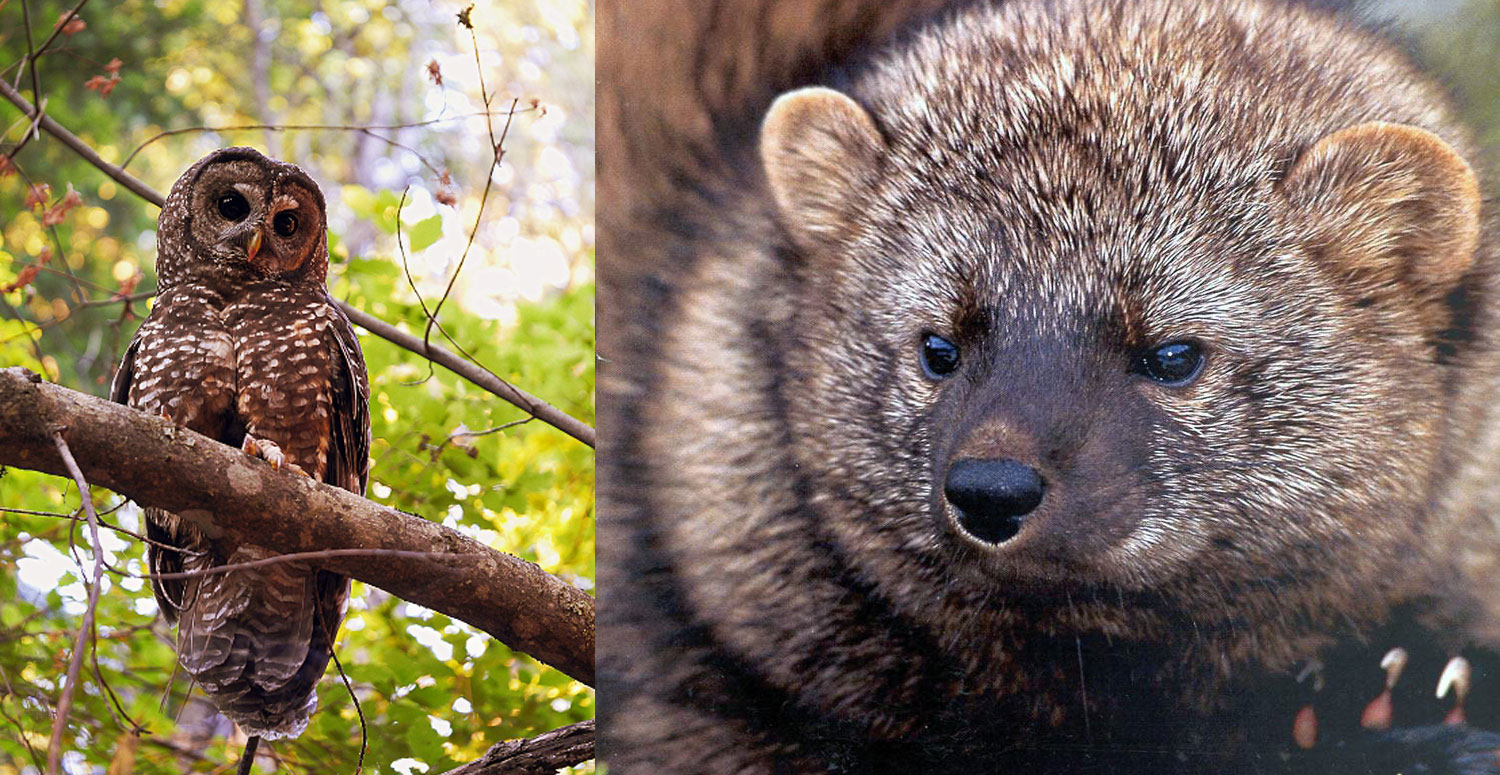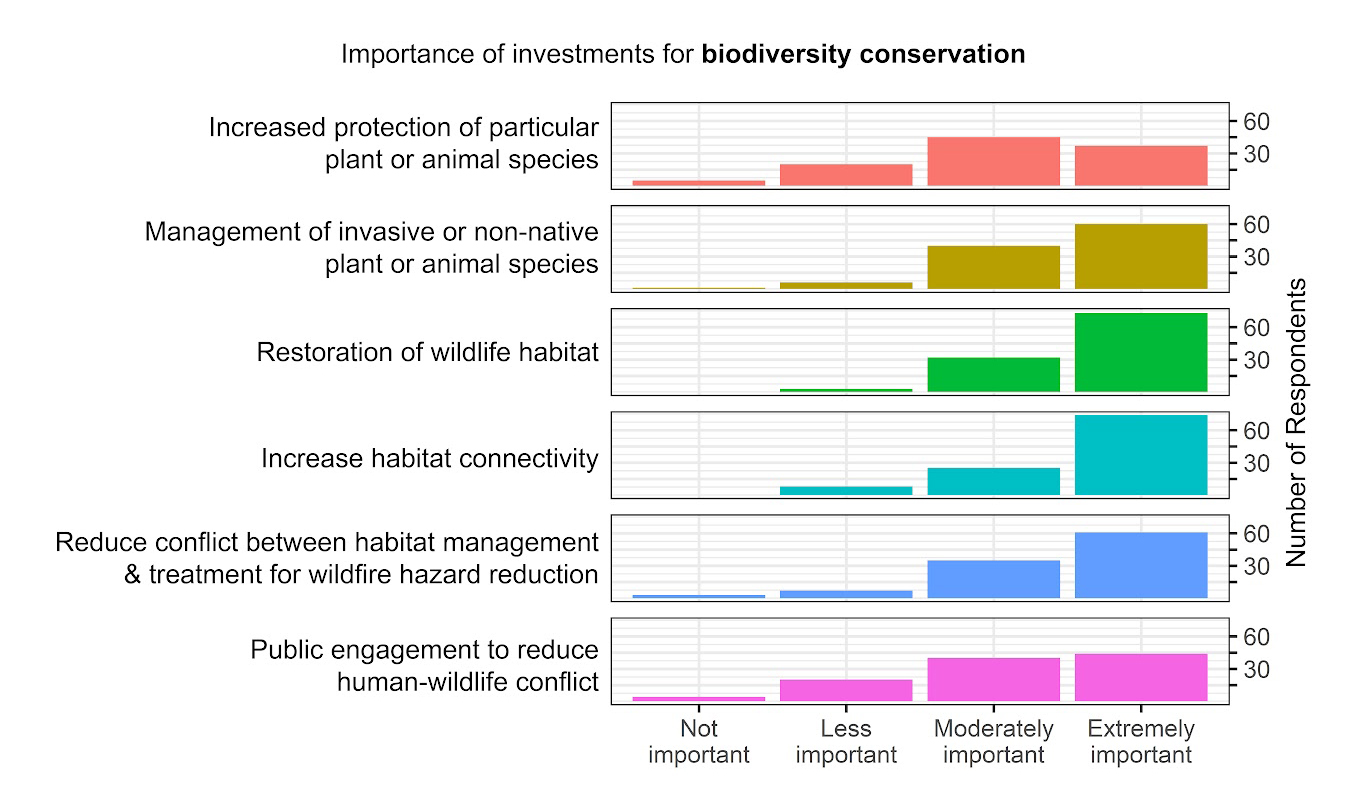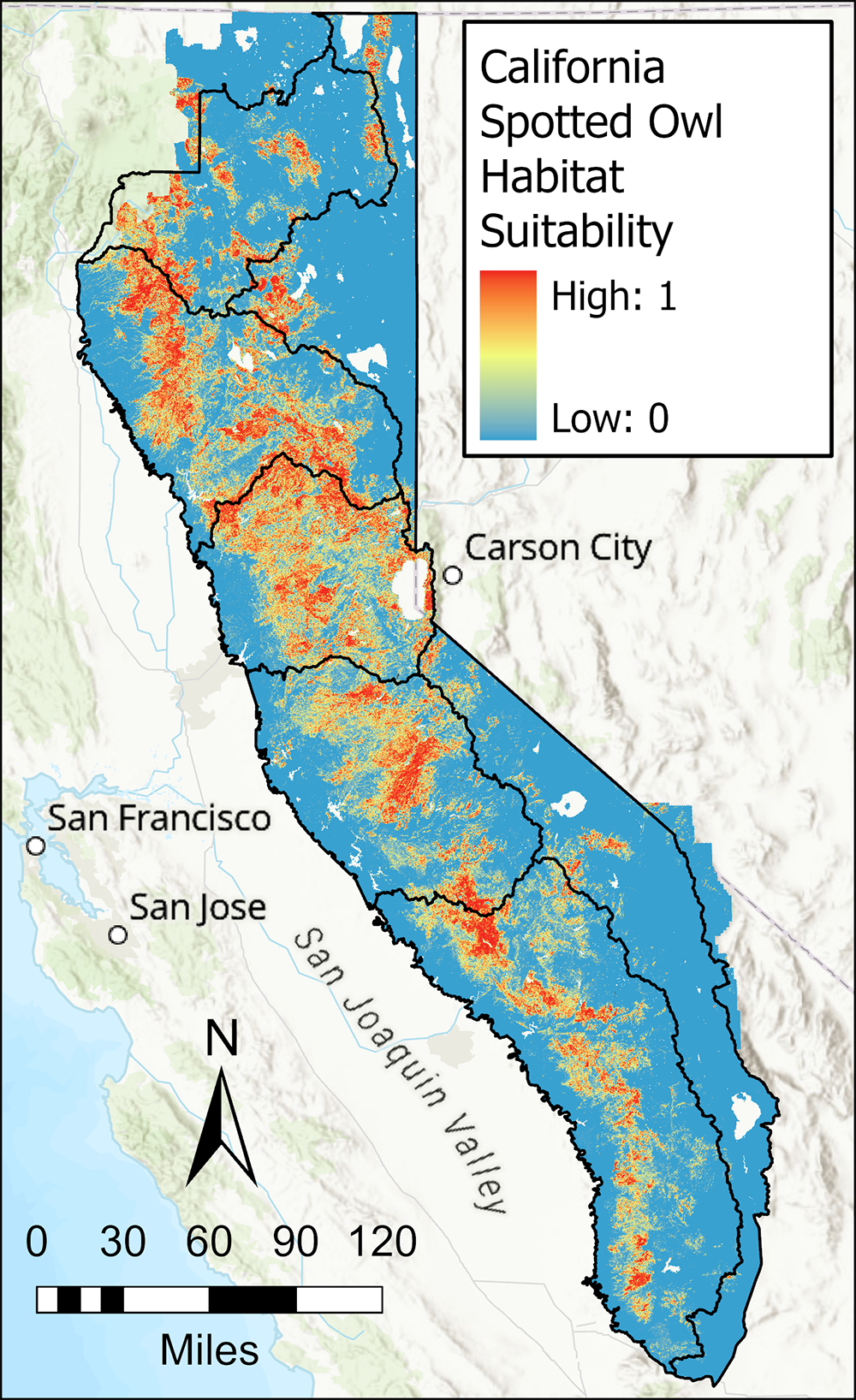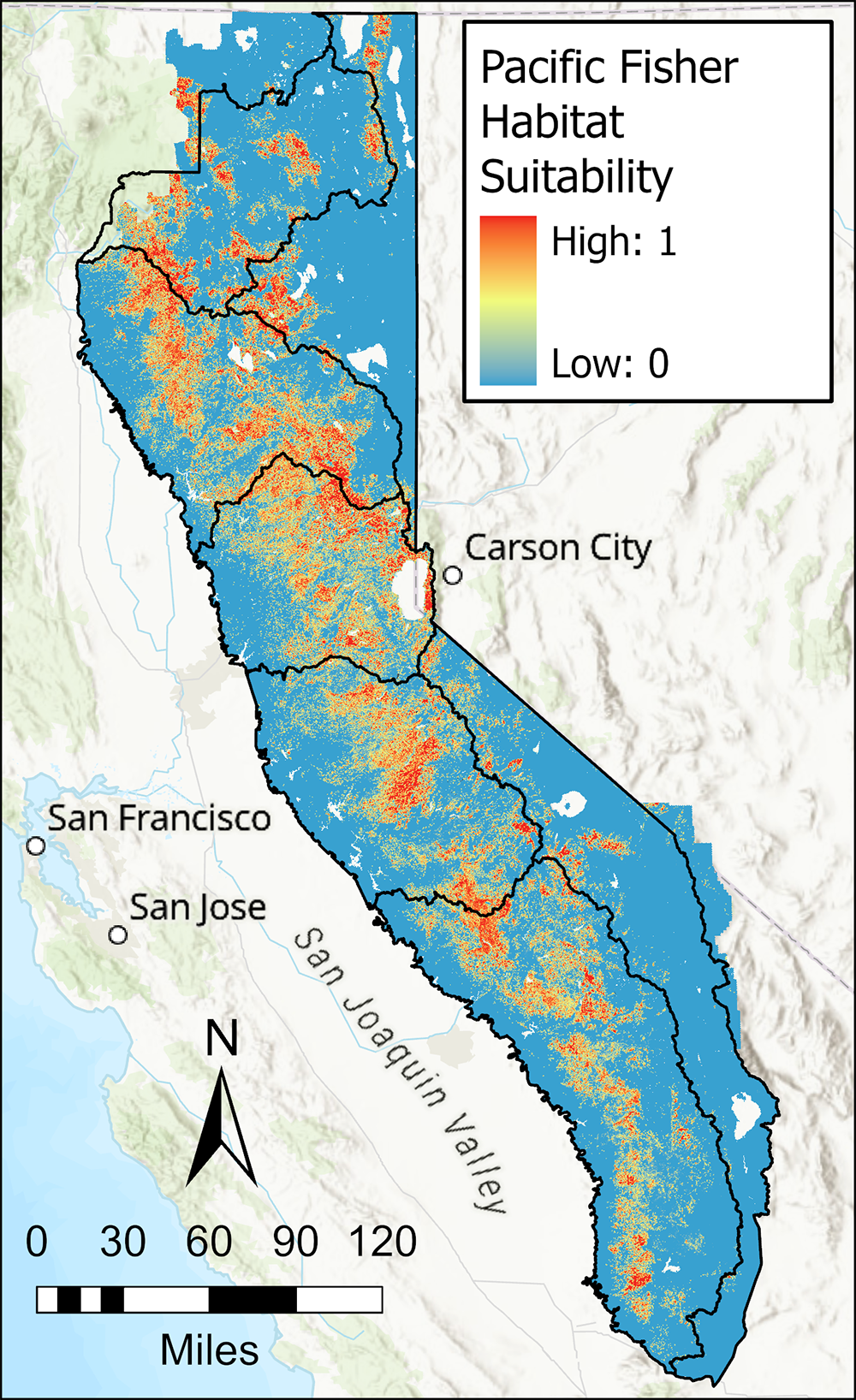Sierra Nevada Regional Profile
Biodiversity Conservation

Overview
Sixty percent of California’s animal species reside in the Sierra Nevada region, making it one of the most biodiverse temperate forests in the world. Management action in forests, riparian areas, and aquatic systems will be critical to mitigate impacts from multiple threats to such biodiversity. Warming temperatures and changes in precipitation may lead to habitat type conversions or to current habitats becoming unsuitable for occupying species. For many species, large and severe wildfires further accelerate habitat loss. For example, some scientific models predict that if current wildfire trends continue, the cumulative amount of spotted owl nesting habitat burned by moderate to high severity fire would exceed the total existing habitat within 75 years. Wildfire can lead to increased sedimentation and flooding as well, which can degrade aquatic habitats.
Forest management to reduce the probability of large and severe wildfires will be critical for the conservation of biodiversity, including threatened species like spotted owls. Management must also protect habitat which will remain or become suitable for sensitive species in the future, which could include:
- Identifying and protecting areas that could buffer species from the impacts of climate change (e.g., “climate refugia”)
- Protecting areas that animals use to move across landscapes
- Actions that protect and encourage growth of larger trees and older stands.
In some cases, actions that increase long-term landscape resilience can have negative short-term impacts to species. For instance, thinning overly dense forest stands can increase forest resilience to drought, insect outbreaks, and wildfire risk, but the management can be disruptive to local wildlife. Managers can balance this trade-off by timing forest treatments to avoid sensitive times of year, such as the nesting or denning season, and by maintaining key habitat elements, such as resting habitat.
Stakeholder Perspectives

Survey respondents considered all potential investments to conserve biodiversity at least moderately important. Efforts to restore habitat and increase habitat connectivity received the most “extremely important” ratings. Interviewees emphasized the importance of taking action to protect irreplaceable biodiversity resources and the challenges involved. An interviewee noted that in the last ten years, 30% of spotted owl protected activity centers (PACs) have been impacted by fire, and if we do not change forest management approaches then we will lose this habitat. For other species, management is hindered by lack of understanding of where critical habitat is on the landscape. Several interviewees highlighted that while it is important that project planning continues to consider and mitigate threats to sensitive species, the regulatory compliance process needs to be more efficient so that projects can be implemented before wildfire causes more harm than the proposed management.
Resource Conditions
Biodiversity and metrics to inform its conservation can be measured in a variety of ways, including habitat suitability for key species of concern. Two such species in the Sierra Nevada region are the California spotted owl and Pacific fisher.

Considering habitat suitability during management planning is important to minimize negative impacts to these species.

Habitat suitability of California spotted owls and Pacific fisher is measured by the likelihood of presence of each species based on a combination of suitable canopy cover, size class of trees, and vegetation type per unit area. Suitable foraging and nesting or denning habitat are included.
